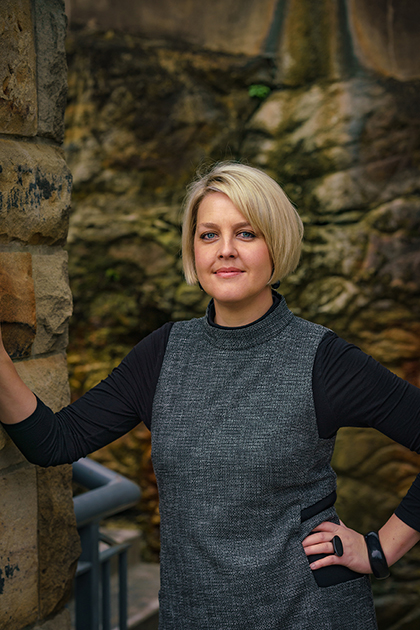“It’s an opportunity to make sure the voices of the past are with us”: How heritage interpretation can change how we experience spaces and places

You may not have heard the term before, but you’ll see ‘heritage interpretation’ everywhere. It’s the plaque on a heritage building that shares its story with passers-by. It’s old sandstone blocks incorporated into the floor of a new office building’s foyer, discretely providing historical context and a link with the past. It’s the QR code along a pathway that you can scan to access historical information about your location. But it is also much more than that.
Dr Madeline Shanahan is a Director at Extent Heritage, and the company’s resident heritage interpretation expert. For Madeline, interpretation is about identifying the stories of a place and communicating them in an engaging way, modifying her approach to reflect the audience.
“The best heritage interpretation is innovative and creative, combining a range of skills and responding to different worldviews,” says Madeline. Maddie works with specialists in public art, web design, filmography, architecture and landscape architecture, interior design, urban design, town planning, museology and historical research.
Maddie herself is both a passionate historian and an archaeologist. Her aim is always to connect people and places, to impart information while celebrating our heritage. Critical to that is community engagement, including her work with Aboriginal Elders.
“Ever since I was a child I’ve had a deep love of history and heritage places,” she says. “I grew up in a heritage village called Berrima in the Southern Highlands of NSW. I remember touching the sandstone in a historic building there and thinking that if I closed my eyes, somehow through touch, I might just be able to go back in time. Like I could connect to the past in a tangible way.”
“The challenge is often that we need to link a lot of different stories, where everyone involved wants different things,” says Madeline. “But what we learn from listening to Elders and knowledge holders, is that Country needs to come first,” says Madeline. This can mean using language, art and material culture to connect people to place.
“Australia is a country that has gone through a phenomenal amount of change in a little over 200 years, much of it devastating,” says Madeline. “Making sure those touchpoints – community and memory and those things that have gone before – are protected is why I love heritage interpretation. It’s an opportunity to make sure the voices of the past are with us, and respected. It can really enhance people’s experience of a place.”
Madeline says interpretation must go deeper than the objects in a museum cabinet or archaeological report. “I try to look at the ways that storytelling works,” she says. “I break it down and create a fulfilling, informative story. I think about characters – the people. It becomes about work and family, aspirations and lives, and how we have changed.”
“You’ve always got to look for the story about people and communities, and what that actually means,” says Madeline. “You can make a good story out of anything if you understand that.”
